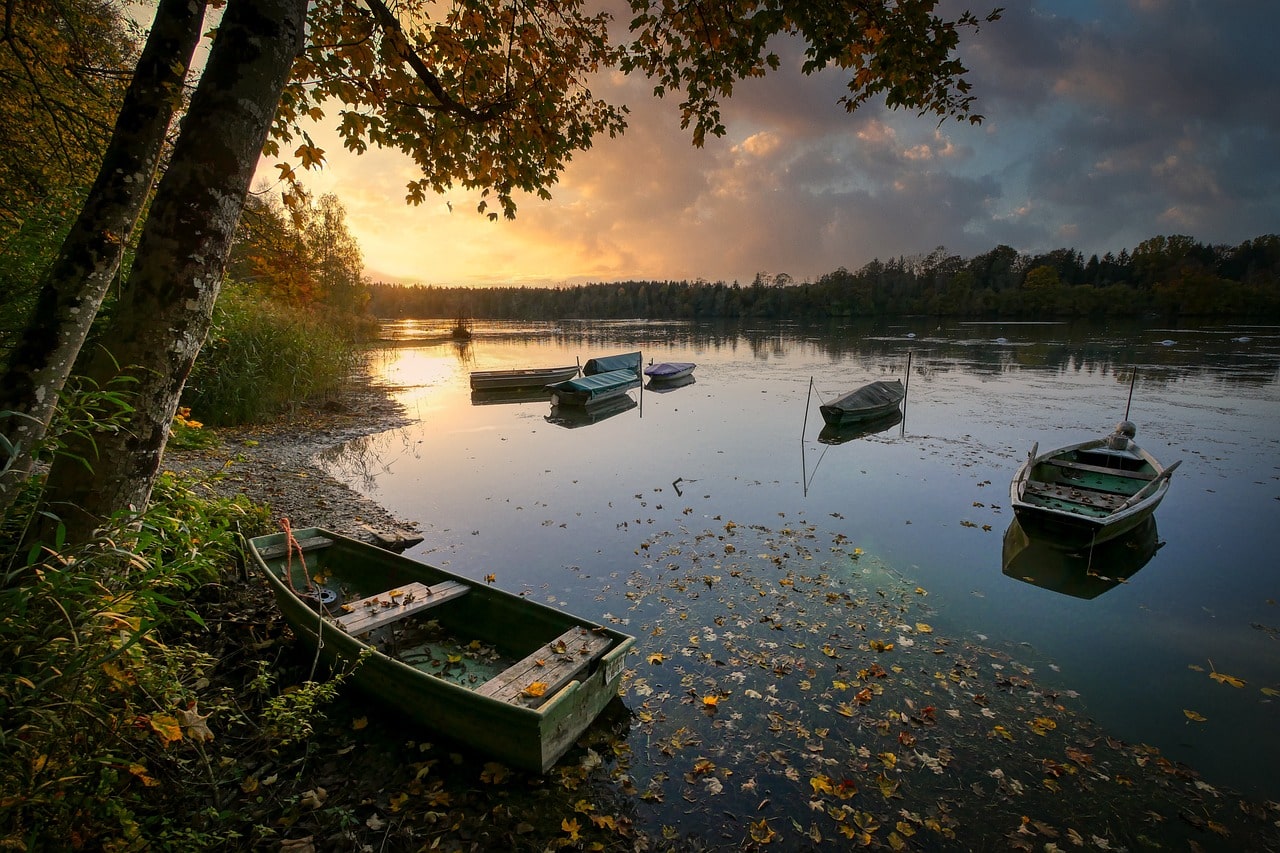Ireland’s Lough Lene, nestled in the heart of northern Westmeath, is a mesmerizing freshwater glacial lake hailed for its crystal-clear waters and immaculate state. Descriptions of its startling transparency often liken the lake to a glass of gin, despite its relatively shallow depth of just 66 feet (20 meters). Studies propose that Lough Lene is nourished by subterranean sources, as no visible streams flow into its waters. Instead, a stream meanders from the eastern reaches of Lough Lene, feeding into the River Deel.,Lough Lene is centrally positioned among the charming villages of Fore, Collinstown, and Castlepollard. Adjacent hamlets such as Collinstown, Richardstown, and Glenidan rely on Lough Lene as a vital water reservoir. Other neighboring lakes in the vicinity encompass Lough Derravaragh, situated 5.6 miles (9 kilometers) west of Lough Lene; Lough Owel, about 11.8 miles (19 kilometers) to the southwest; and the expansive Lough Ree, positioned 31 miles (50 kilometers) in the same direction. Proximity to Dublin airport, merely 62 miles (100 kilometers) away, renders Lough Lene conveniently accessible to air travelers.,Just a short 20-minute drive from Lough Lene lies Mullingar, a bustling commercial nexus and tourist hub linked to various parts of Ireland by the Royal Canal – a series of 46 locks connecting the River Shannon to Dublin city. Enthroned on this popular travel and trade conduit, Mullingar has emerged as a preeminent cattle-rearing center in Ireland, renowned for its prized Mullingar Pewter craftsmanship. The town’s cultural vibrancy is reflected in the celebrated Mullingar Arts Centre, beckoning visitors with a rich tapestry of cultural events and live performances.,Mullingar stands at the gateway of the Fore Trail, a meandering road trip that traverses numerous historic sites on a scenic journey. Travelers embarking on this circuit are treated to a treasure trove of attractions, including Knockdrin Castle, Crookedwood village, Taughmon Church and its ancient fort, Lough Derravaragh, Collinstown village, Lough Lene, Fore Abbey, Lough Crew cairns and gardens, Tullynally Castle and gardens, and Multyfarnham. On the return leg to Mullingar, Lough Owel and its idyllic islands beckon, offering opportunities to pause, relax, and savor a leisurely picnic along the way.,Angling enthusiasts rejoice in the fishing season at Lough Lene, from March 1 to September 30 each year, where the stunning natural beauty serves as a backdrop to the abundant pike and wild brown trout populations. Regarded as a prime fishing locale in Ireland, Lough Lene features three picturesque islands – Nun’s Island, Castle Island, and Turgesius Island – enveloped by shallow waters, ideal for angling, including fly-fishing. Collectively known as Smythe’s Islands, these isles are steeped in history, having served as refuges during tumultuous periods and yielding significant archaeological remains. Monks Island, the fourth isle noted in historical maps, appears to have merged with the surrounding wetlands.,Lough Lene beckons families seeking an untainted vacation spot teeming with diverse flora and fauna. While a myriad of water activities including windsurfing, sailing, and swimming flourish, regulations prohibit jet skis and water skis on the lake, ensuring its preservation. The local farming community is diligent in preserving the lake’s ecological balance, actively monitoring runoff to safeguard the aquatic ecosystem. Such conscientious stewardship earned Lough Lene the prestigious Blue Flag, the first freshwater lake in the European Union to receive this esteemed environmental accolade. This recognition underscores the lake’s commitment to pristine water purity and ecological integrity.,Blessed with superior water quality and a rich ecological tapestry, Lough Lene’s environs provide a haven for a diverse avian population, including tufted ducks, gray herons, mallards, mute swans, and various other waterfowl species. The wooded expanse at Lough Lene’s northwest fringes harbors an abundance of sphagnum mosses, bilberry bushes, and fragrant heather. The wet woodland supports a lush variety of plant life including birch, alder, willow, marsh pennywort, jointed rush, pondweeds, stoneworts, and common reeds. Spanning 2 miles (3.2 kilometers) in length and 1 mile (1.7 kilometers) in width, covering roughly 500 hectares, Lough Lene nurtures a rich tapestry of aquatic and terrestrial life. Goats, sheep, horses, and cattle are among the grazing animals that give the picturesque region a pastoral character.,Outdoor enthusiasts relish the plethora of activities available, from horseback riding and golf to cycling, hiking, and exploring historic gardens and archaeological sites. Lough Lene boasts an array of ancient ruins and prehistoric burial grounds, adding depth to its allure as a place once inhabited by the legendary king, Turgesius.,Lough Lene, known by various names including Lough Lein, Lough Leibinn, and Lough Lane, stands out for its unique hard-water status, with marlstone and limestone dominating its bed. Surrounded by historical significance and natural splendor, it’s no surprise that Lough Lene’s vicinity draws travelers seeking a befitting retreat.,A gamut of lodging options awaits visitors, from self-catering cottages and revamped farmhouses to cozy bed and breakfasts, rustic lodges, and secluded cabins. A vacation spent in Ireland leaves an indelible mark, as the country’s enchanting landscapes and hospitable locals enchant and entice travelers to immerse themselves in this magical realm. Many visitors find themselves captivated, opting to make Ireland their permanent abode by investing in a summer getaway or constructing their dream home amidst the rugged, scenic expanse.,Fore village’s ancient Fore Abbey, dating back to circa 630 A.D., stands as a testament to history amid the backdrop of the yellow plague era. Over 300 monks once thrived in this monastic community, which lies a mere 10-minute drive from Lough Lene. The Abbey offers a glimpse into ancient times, with the Seven Wonders of Fore showcasing marvels such as “the water that flows uphill” and “the tree that won’t burn.” Despite facing burning incidents from 771 to 1169 A.D., Fore Abbey endured, emerging as a cherished attraction resonating with a palpable aura of age-old tales and enduring resilience.

